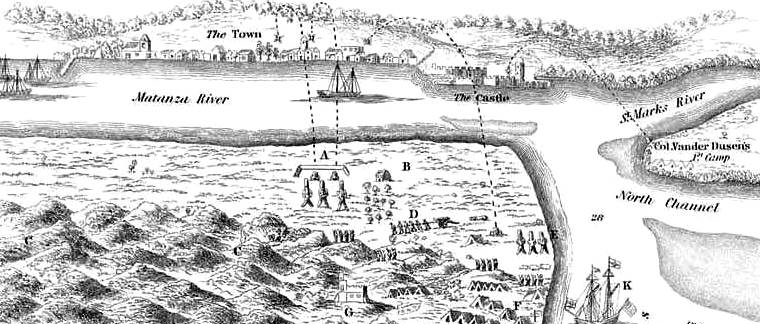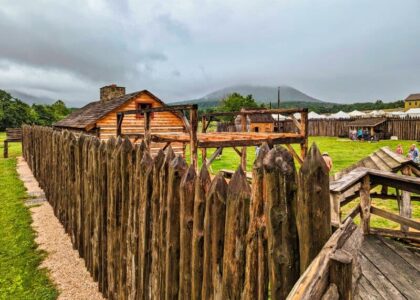Welcome to the historical site known as ‘1740: British Attack San Marcos’. Nestled in the heart of St. Augustine, Florida, this location marks a pivotal moment in the colonial history of what is now the United States. Picture yourself standing on the very ground where, on June 13, 1740, a significant clash unfolded between the British and Spanish forces.
Let’s wind the clock back to the early 18th century. The year was 1740, and tensions were simmering between the Spanish and British empires, both vying for control over the southeastern region of North America. St. Augustine, the oldest continuously inhabited European-established settlement in the continental United States, was under Spanish control. It was a strategic location, a fort town protected by the formidable Castillo de San Marcos, a sturdy coquina fortress built to defend Spanish territories.
The British, under the command of General James Oglethorpe, a prominent figure and founder of the colony of Georgia, sought to capture St. Augustine. His ambitions were driven by the strategic importance of the city and the desire to expand British influence. Oglethorpe launched a bold siege on the Castillo de San Marcos, hoping to starve the Spanish out. However, the siege would prove to be more challenging than anticipated.
During the siege, the Castillo’s robust defenses and the determination of its defenders, led by Governor Manuel de Montiano, thwarted British efforts. The Spanish used ingenious tactics, including the use of their naval prowess and the fortified structure of the Castillo to their advantage. Despite several weeks of relentless assault, the British forces were unable to penetrate the defenses. The siege eventually ended in failure for the British, marking a crucial victory for the Spanish.
Over time, this site has evolved from a battlefield to a symbol of resilience and cultural heritage. The Castillo de San Marcos remains a testament to the era’s architectural ingenuity and the tumultuous history that shaped the region. Today, it stands as a National Monument, drawing visitors from around the world who come to explore its storied walls and learn about the rich history of St. Augustine.
As you walk the grounds, imagine the echoes of cannon fire and the tension of those who once stood here, caught in the crossfire of empires. This site is not just a relic of the past but a continuing narrative of cultural exchange and conflict resolution.
The legacy of the 1740 British attack on San Marcos is a reminder of the strategic importance of St. Augustine and its role in the broader context of colonial power struggles in America. The stories of those who lived, fought, and persevered here bring the past to life, offering a window into the complexities and dynamics of a bygone era.






